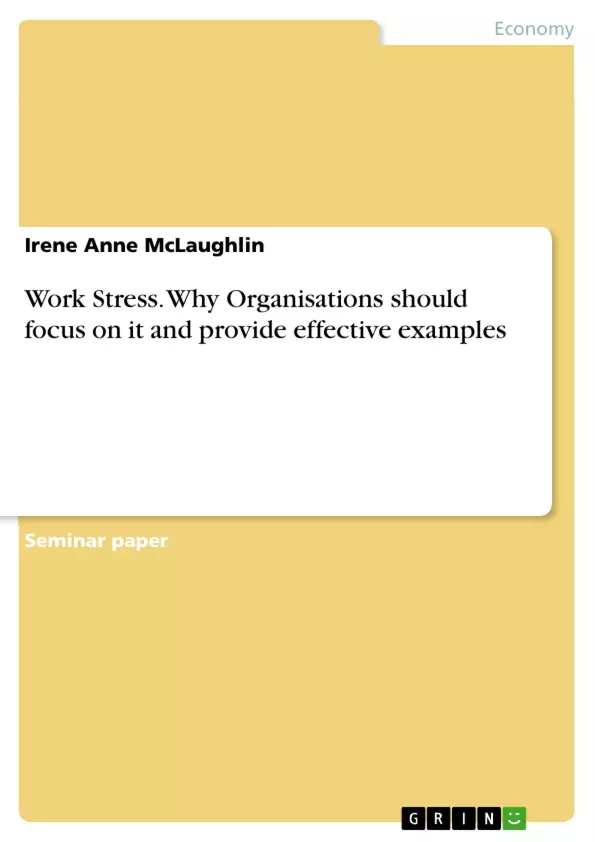Stress can pervade anyone at any level of business. Recent research shows that work-related stress is widespread and not confined to particular sectors, jobs or industries. Stress is not an illness; it is deemed to be a state. Further research deemed that the condition could be both mental and physical where stress becomes too excessive and prolonged. This varies from individual to individual affecting those unable to cope. It is unclear whether this is stress or depression, however, it is linked with high sickness absence, staff turnover, and increased errors. Therefore, it is a cost to both businesses and individuals.
This paper focuses on why organizations should focus on work stress and provides examples of local organizations effectively doing so.
Inhaltsverzeichnis (Table of Contents)
- Introduction
- The Business Case Why Organisations Should Focus on Work Stress
- Economic Impact
- Organisational Outcomes
- Operational Issues and Costs
- Intangible Costs
- Individual Outcomes
- Ways to Manage
- Organisations Effectively Dealing with Work Stress
- Summary
- Conclusion
- References
- Appendices
Zielsetzung und Themenschwerpunkte (Objectives and Key Themes)
This paper argues the business case for why organisations should focus on work stress, providing examples of local organisations effectively doing so. It explores the economic, organisational, and individual impacts of work stress, highlighting the importance of managing stress to improve employee well-being and organisational performance.
- The economic impact of work stress on organisations and the wider economy.
- The organisational outcomes of work stress, including operational issues, intangible costs, and employee engagement.
- The individual outcomes of work stress, including psychological and physiological effects.
- Strategies and models for managing work stress within organisations.
- Examples of local organisations effectively addressing work stress.
Zusammenfassung der Kapitel (Chapter Summaries)
The introduction defines work stress and its potential impacts on individuals and organisations. It highlights the difference between motivating pressure and harmful stress, emphasizing the importance of creating a healthy work environment.
Chapter 2 presents the business case for why organisations should focus on work stress, examining the economic, organisational, and individual consequences. It explores the costs associated with stress, including absenteeism, presenteeism, and employee turnover. The chapter also delves into the intangible costs of stress, such as customer dissatisfaction and poor performance.
Schlüsselwörter (Keywords)
Work stress, organisational performance, employee well-being, economic impact, organisational outcomes, individual outcomes, stress management strategies, local organisations, HSE, Gallup, employee engagement, presenteeism, absenteeism.
- Quote paper
- Irene Anne McLaughlin (Author), 2015, Work Stress. Why Organisations should focus on it and provide effective examples, Munich, GRIN Verlag, https://www.grin.com/document/323940



